[Kitty draws us into a night of history, photography, film, and community, in an evening spent remembering the stories of North Philly. — the Artblog editors]
Frozen in time
All that was missing were the sounds of yesteryear:
* As cops stood around, with assistant police commissioner Frank Rizzo in their midst, as the 1964 Columbia Avenue riot cooled down.

* As “screaming” teenagers watched Stevie Wonder, the Jackson Five, James Brown, and others perform silently at the Uptown Theater.
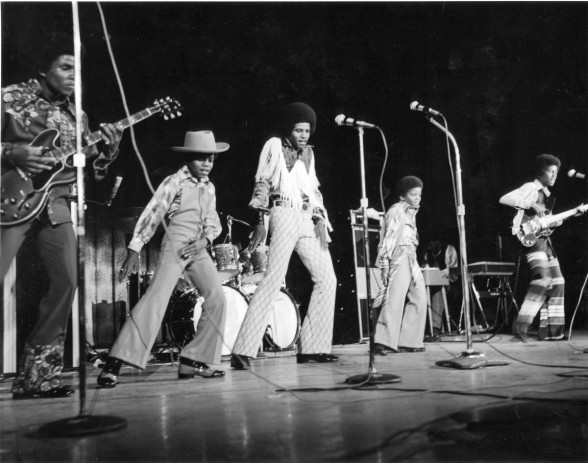
* As Langston Hughes read from his poetry book: “Hold fast to dreams…” at the Pyramid Club.
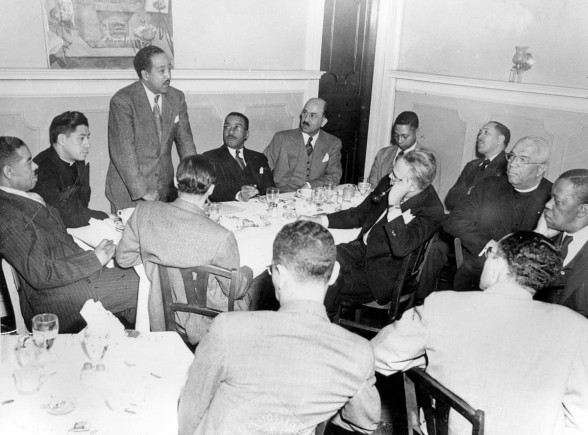
* As Philadelphia printmaker Dox Thrash and painter Horace Pippin met with patrons at art exhibits prior to becoming nationally recognized African-American artists.
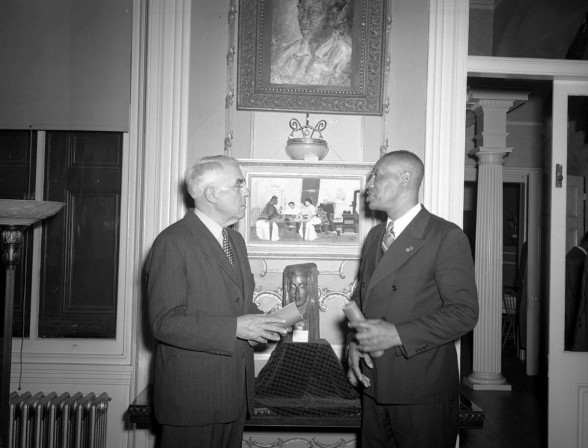
Horace Pippin and Dr. Albert Barnes at the Pyramid Club Art Exhibition, 1944. Courtesy of the Charles L. Blockson Afro-American Collection, Temple University Libraries, Philadelphia, Pennsylvania.
* As Cecil B. Moore and the Rev. Dr. Martin Luther King challenged segregation at Girard College during the 1968 protests.
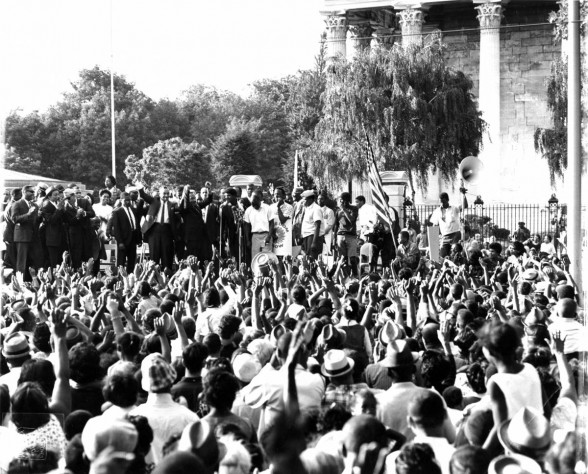
These and other 16 mm outtakes, some silent, of news events by local TV stations were shown April 11 at “Unedited Philadelphia,” in a second look at North Philadelphia during a three-hour program at the Wagner Free Institute Of Science, on Montgomery Avenue near 17th Street.
Photographs, videos, and oral histories
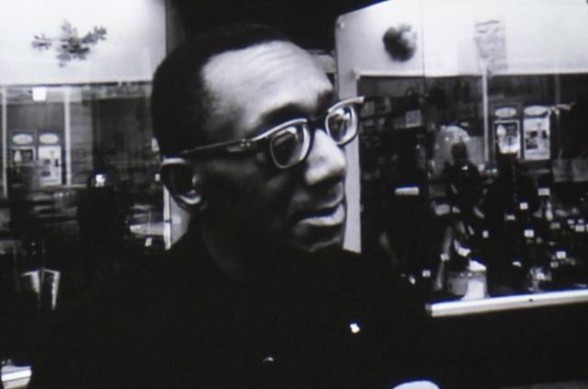
Susan Glassman, director of the Wagner Free Institute of Science, welcomed about 50 people, mostly young, who came to learn more, and share what they knew, about the seven-block radius of the Wagner Free Institute of Science. The first program in this series about North Philadelphia was held last November.
Assistant archivist John Pettit found these video gems at Temple University Libraries Special Collection Research Center, where he digs up archival materials to catalogue and later shows them to various venues.
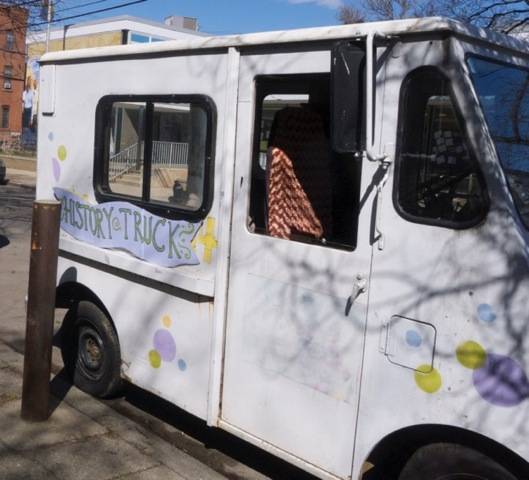
This time, Erin Bernard, a master’s candidate in history at Temple, recorded oral histories of members of the audience about North Philadelphia inside her mini “Philly History Truck,” with its Oriental carpet, two chairs, and a table, while other Temple University students interviewed others outside.
In a series of rotating photographs on view, photographer John W. Moseley specialized in documenting African-American life in the 1930s to early 1960s. He took pictures of famous and not-so-famous black Philadelphians, such as Raymond Pace Alexander–the Harvard-educated lawyer who fought for civil rights and became the first black person on Pennsylvania’s Common Pleas Court–as well as Episcopal Rev. Paul Washington, whose Church of the Advocate, at 18th and Diamond streets, became a refuge in the fight for civil rights, and others.
Moseley also took photos of places that meant something in the black community, including Raymond Rosen Housing Project, the Pearl Theater, and the Divine Lorraine Hotel, when they were new, as well as neighbors cleaning up their streets or participating in meetings.
Though two panelists failed to show, North Philadelphia resident Evelyn Gray, 76, more than made up for the panelists’ discussion, railing about how developers should give back to the neighborhood. But Kenneth Scott, president of Beech Companies, a sponsor of the event, reminded Gray of the many improvements being made in the neighborhood.
Indeed, Scott, who has headed Beech Companies for 10 of its 25 years, has focused on bringing residents and business owners together to revitalize the area from Susquehanna Avenue to Girard Avenue and Broad Street to 20th Street. Operating through its nonprofit company; a bank; a real estate company, and its media company, Beech has invested $10 billion in the neighborhood, including 1,000 units of affordable housing and a new library, and has created a low-cost loan program for residents. Beech has also given financial grants to nonprofits, engaged high-school students in high-tech classes to learn micro-engineering, technology, advertising, and design, and recently awarded $1,000 grants to five incoming and current Temple University students.
Apparently Scott and Gray have talked about these improvements in the past, which prompted Gray to say: “I’m grateful for the neighborhood. Thank God for the Beech [companies].”
Then, Gray resumed recounting her memories of growing up in the neighborhood. She recalled how you could buy anything on the commercial district of Columbia Avenue, which was also home to a number of speakeasies.
The night of the 1964 riot, she said, she was in a speakeasy. “I came outside and everyone was in a turmoil,” she said. “I ran back inside, but everyone was coming out and getting into fights. I don’t think I’ve ever endured something like that again.”
The program was the collaborative effort of the Wagner Free Institute of Science, Temple University Libraries Special Collection Research Center, the Philly History Truck, and Beech Companies.









